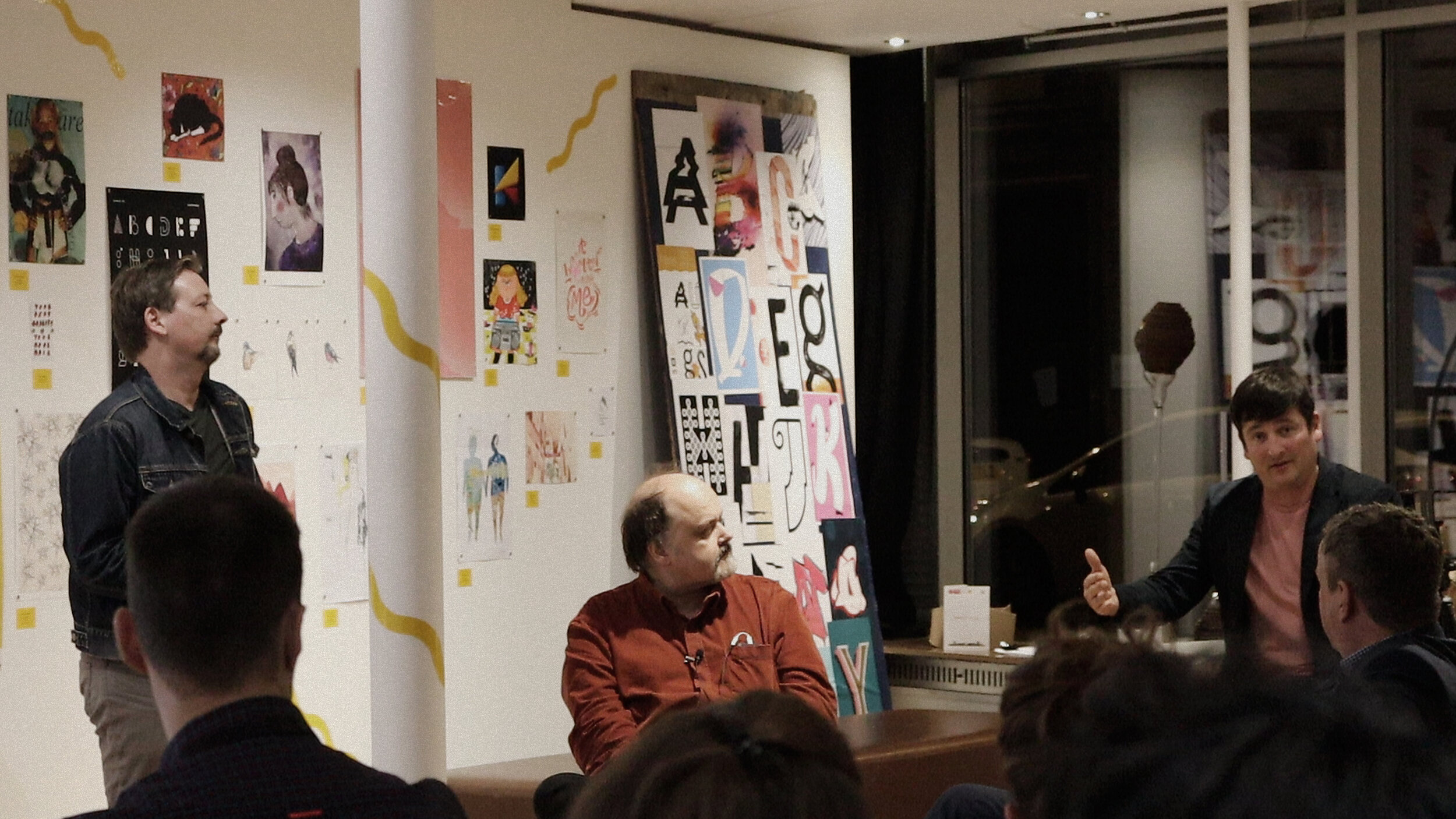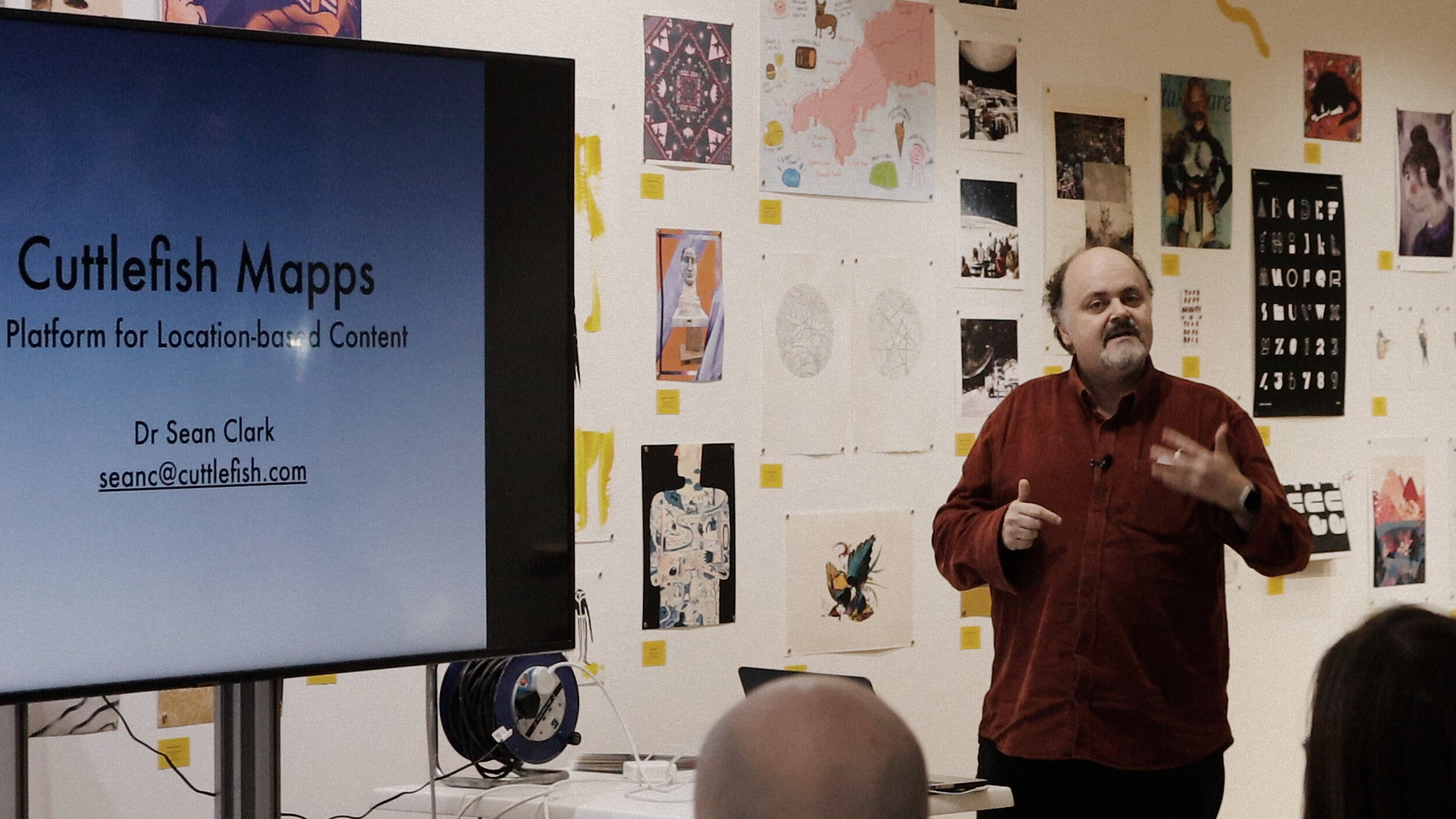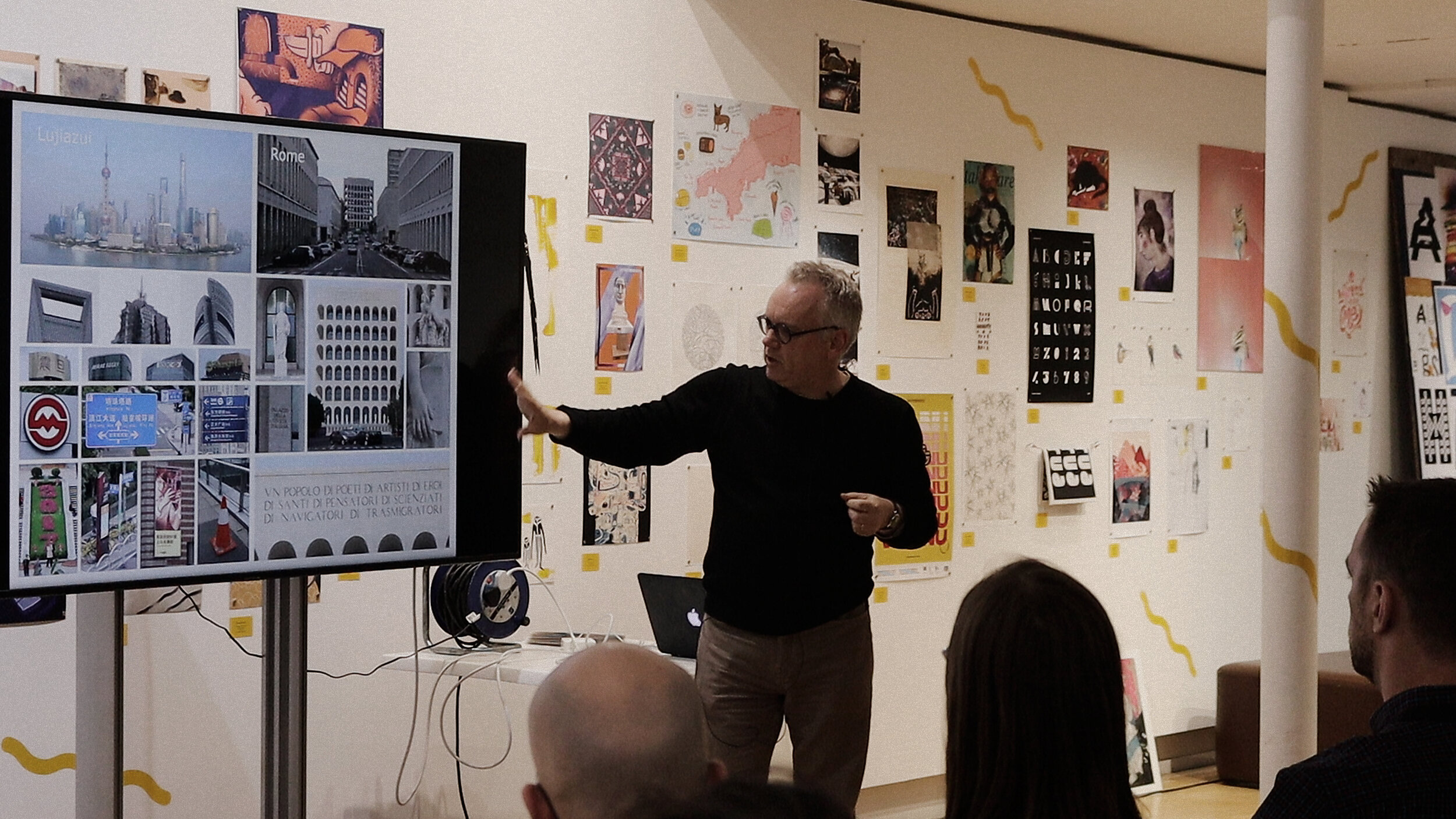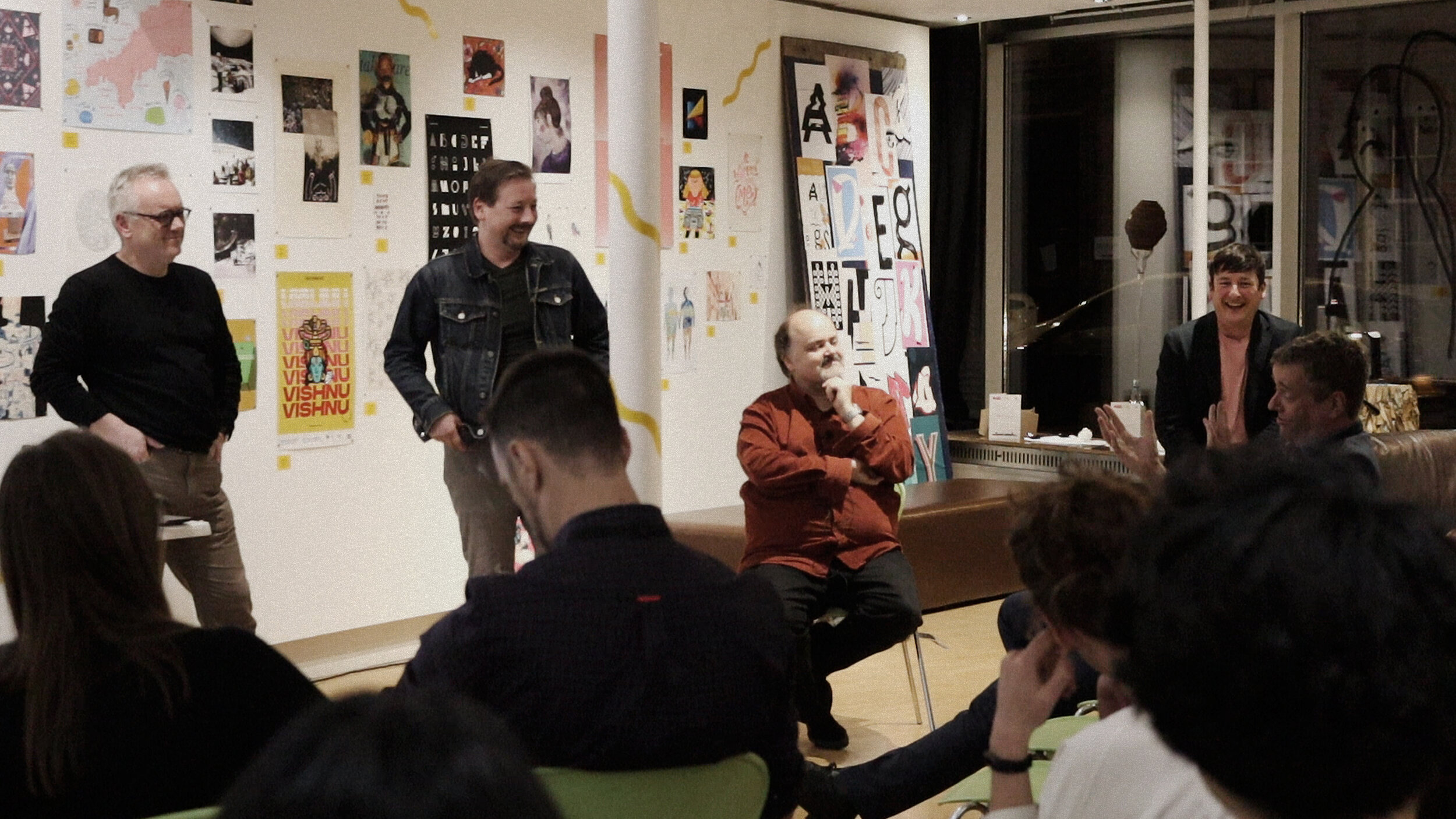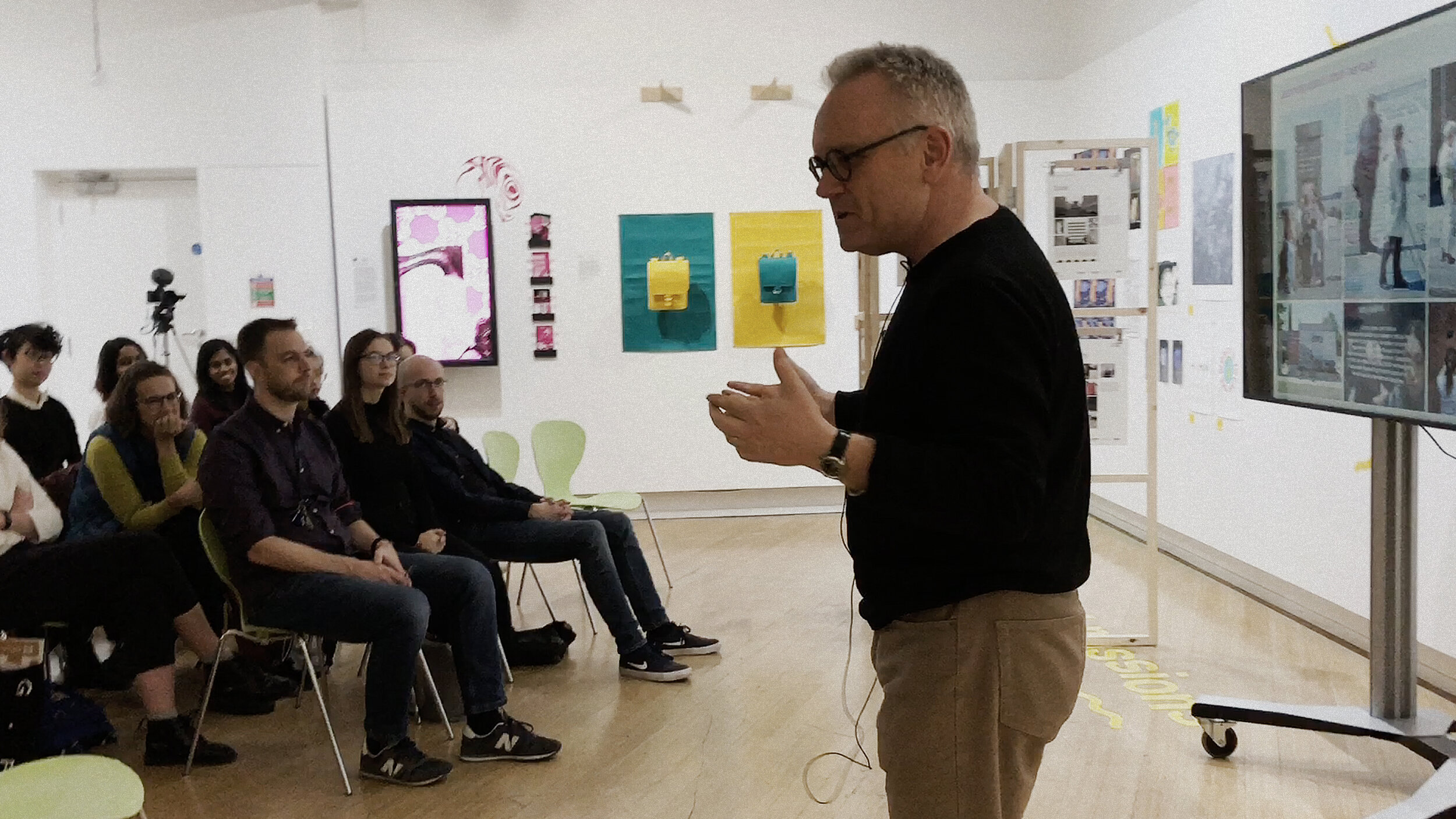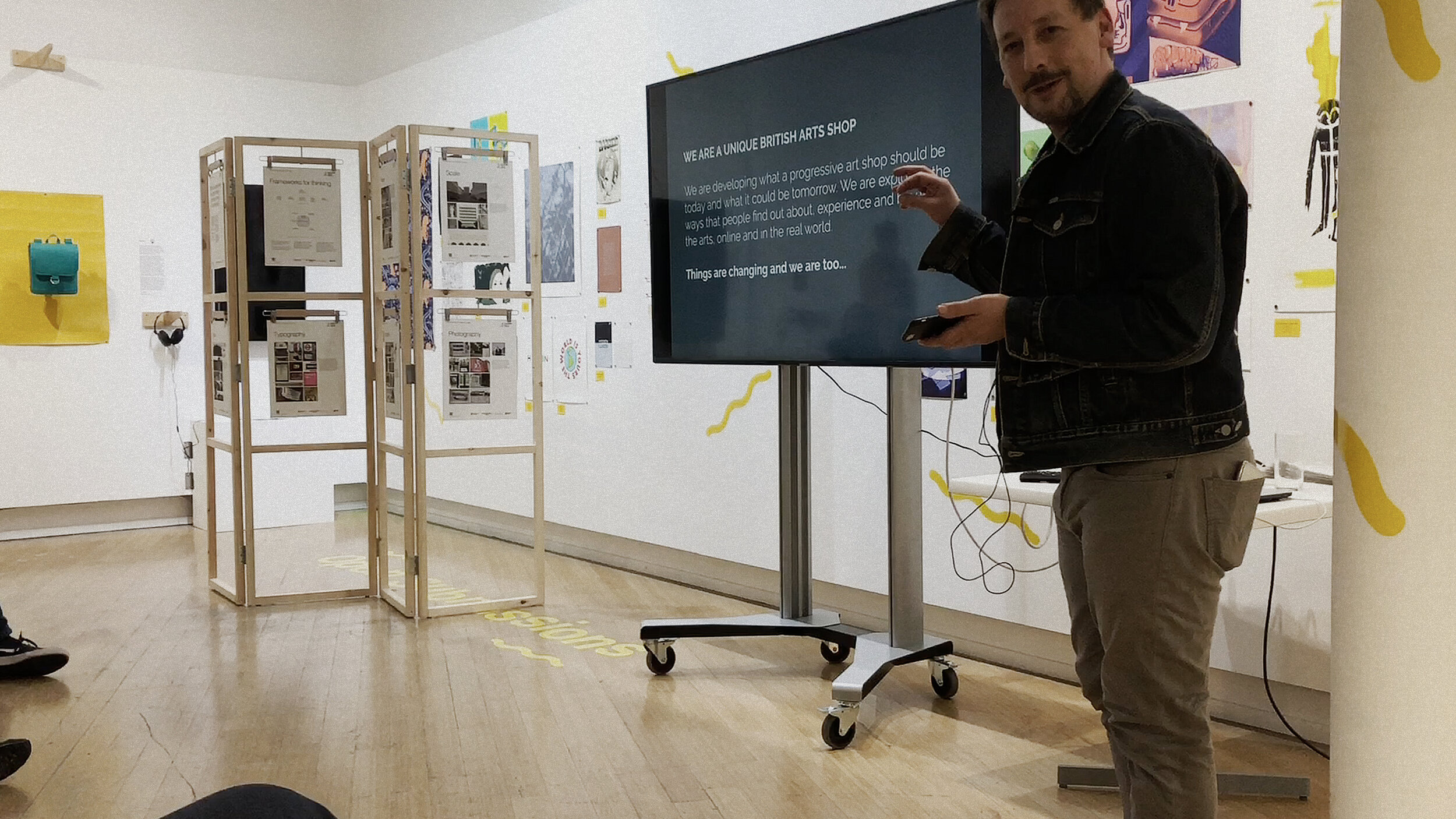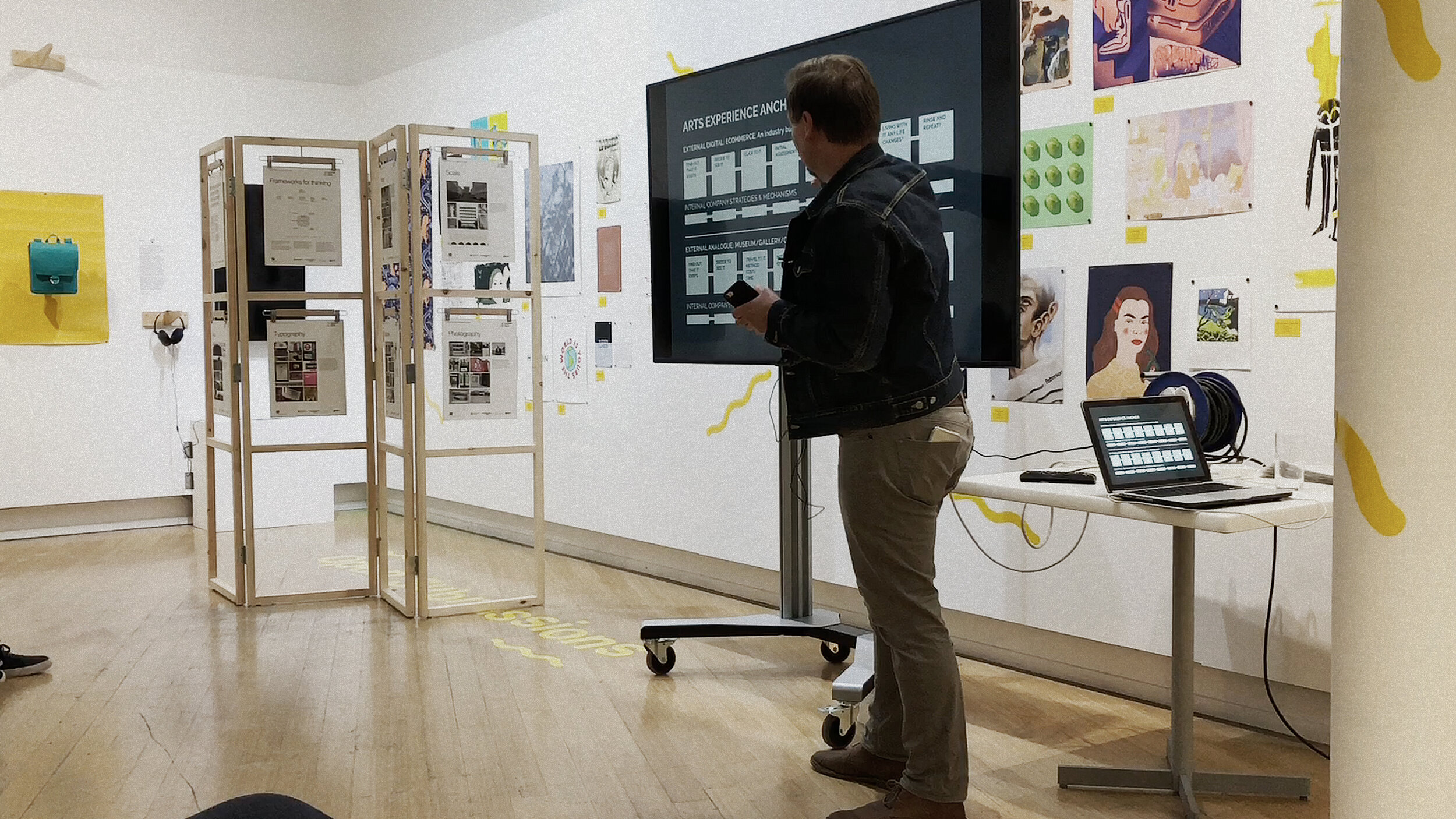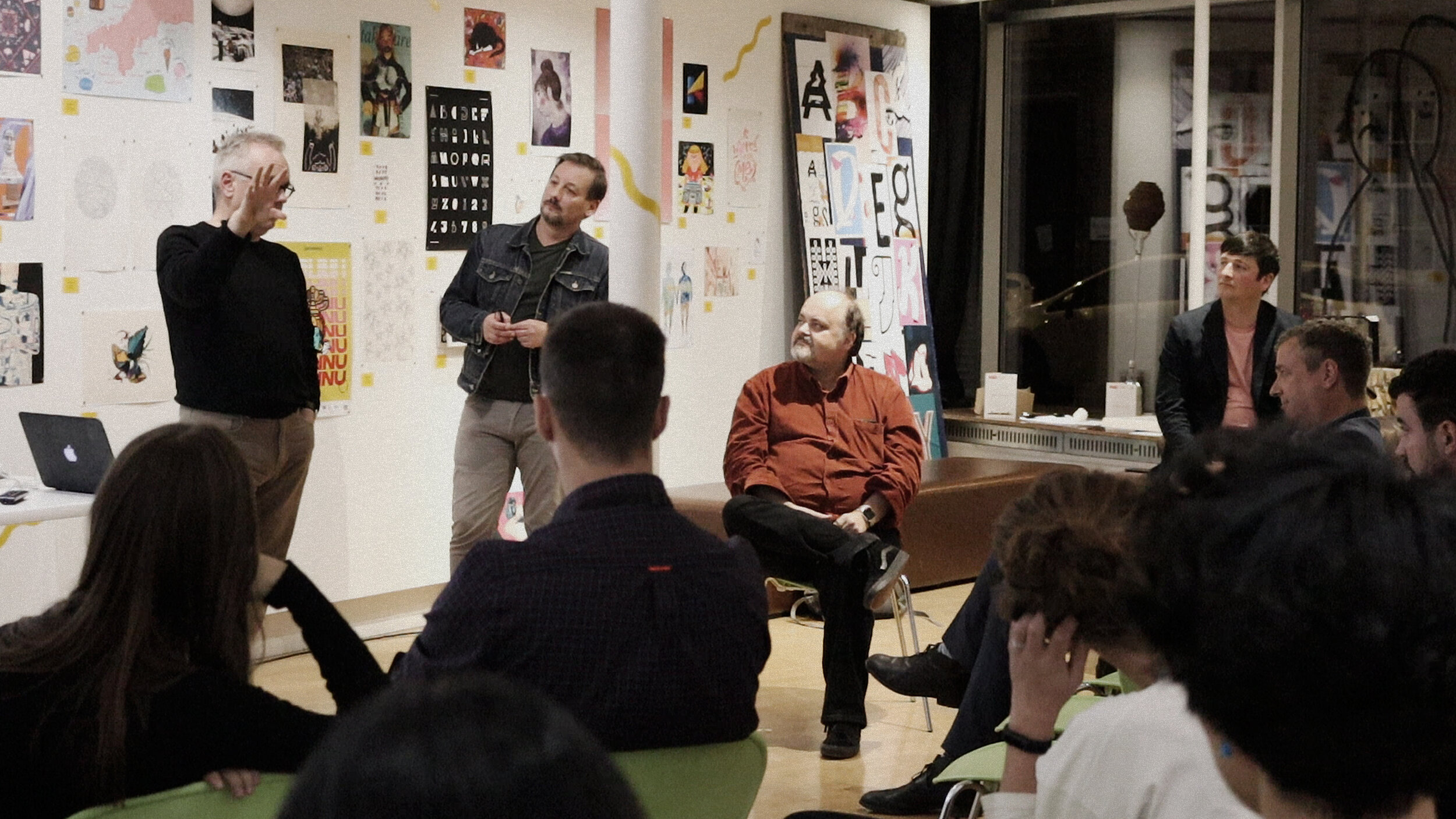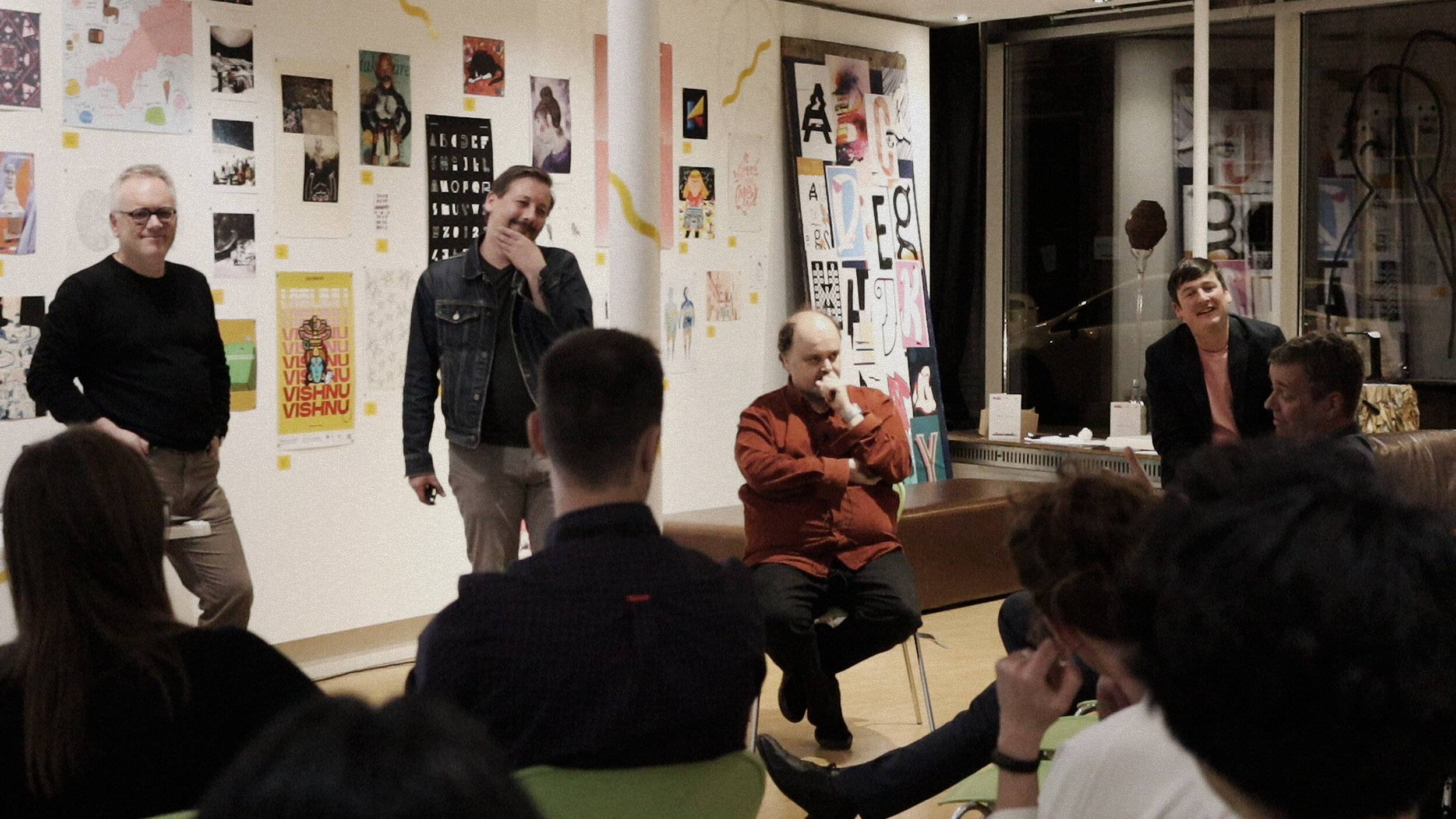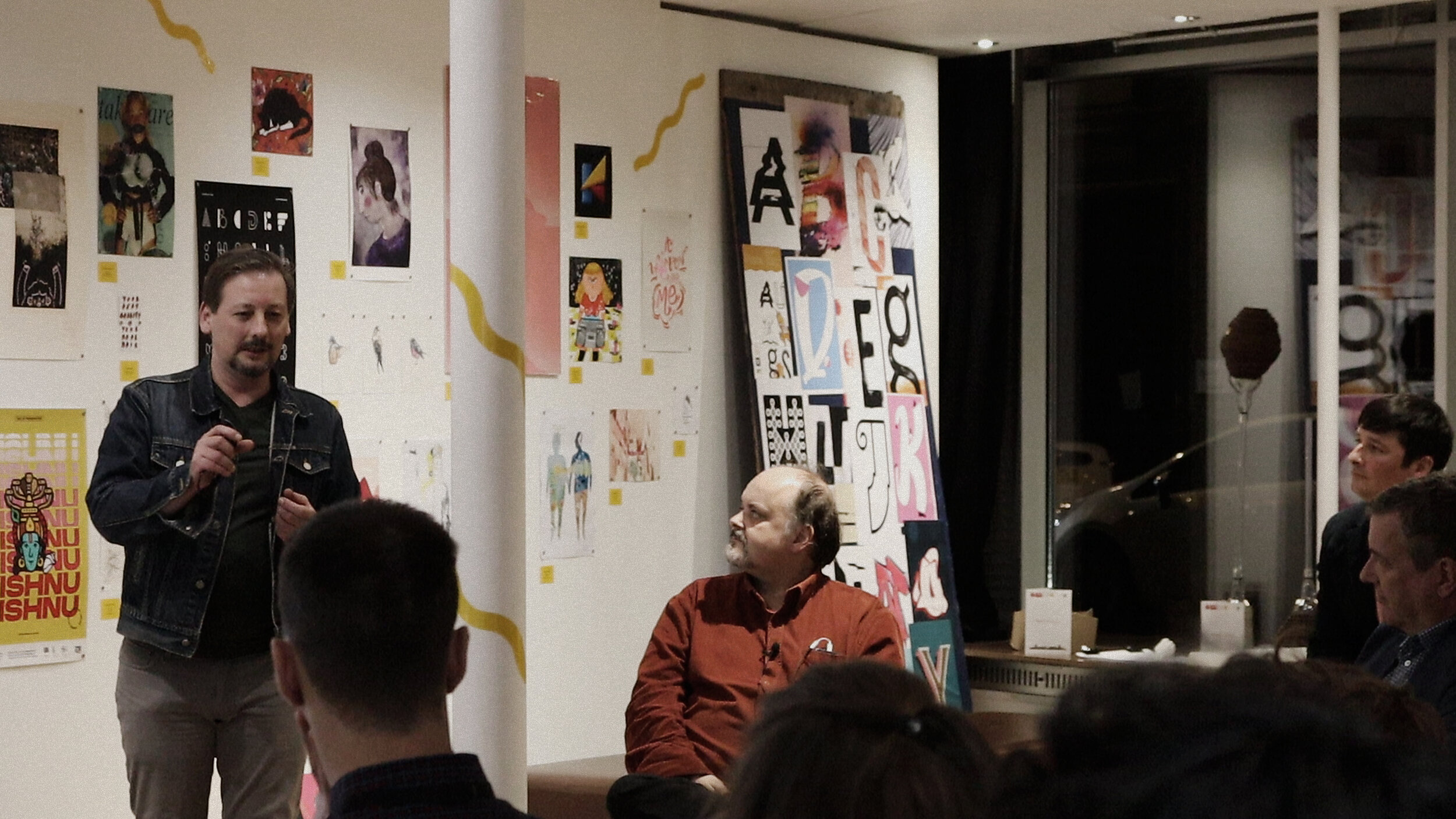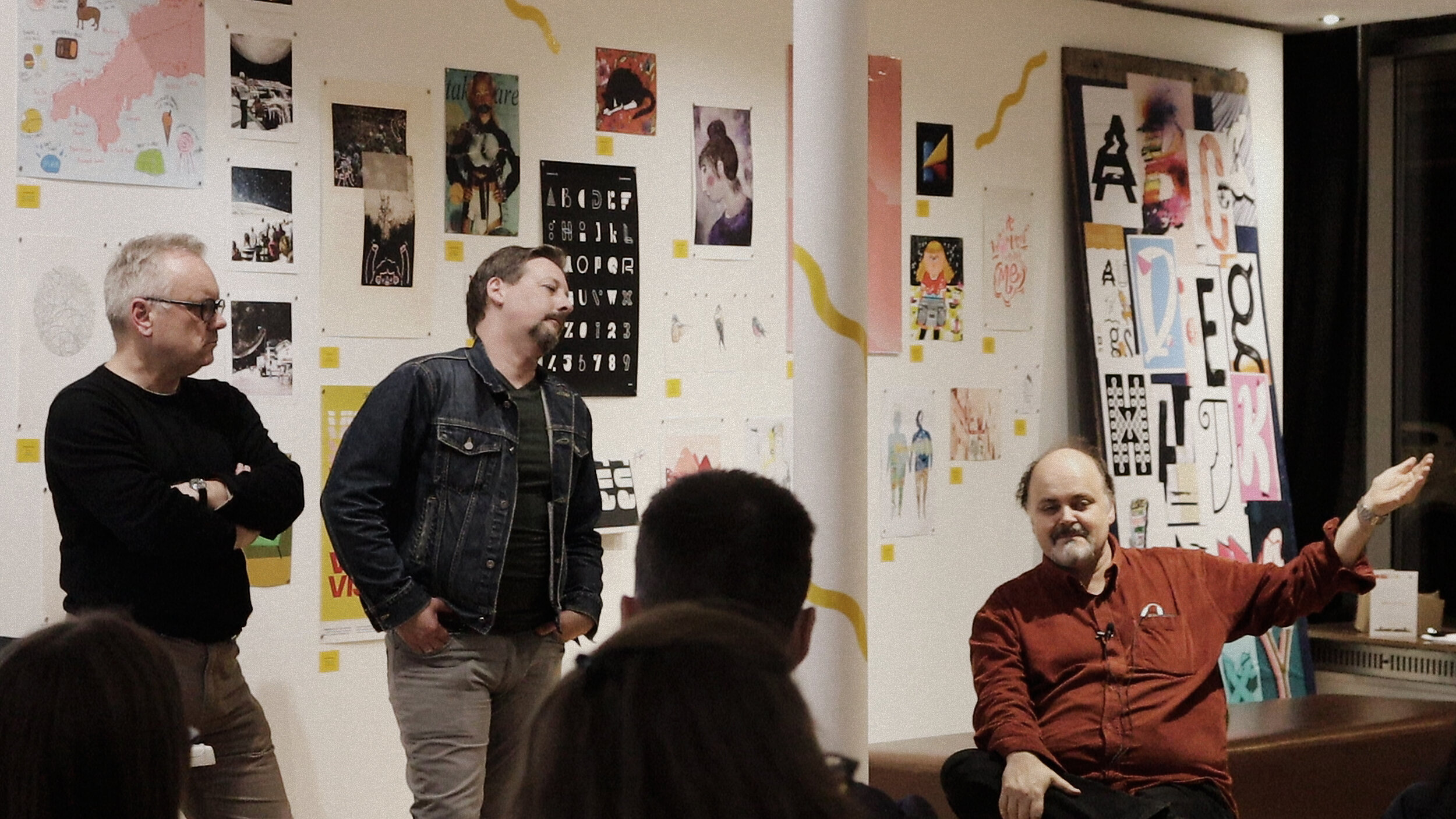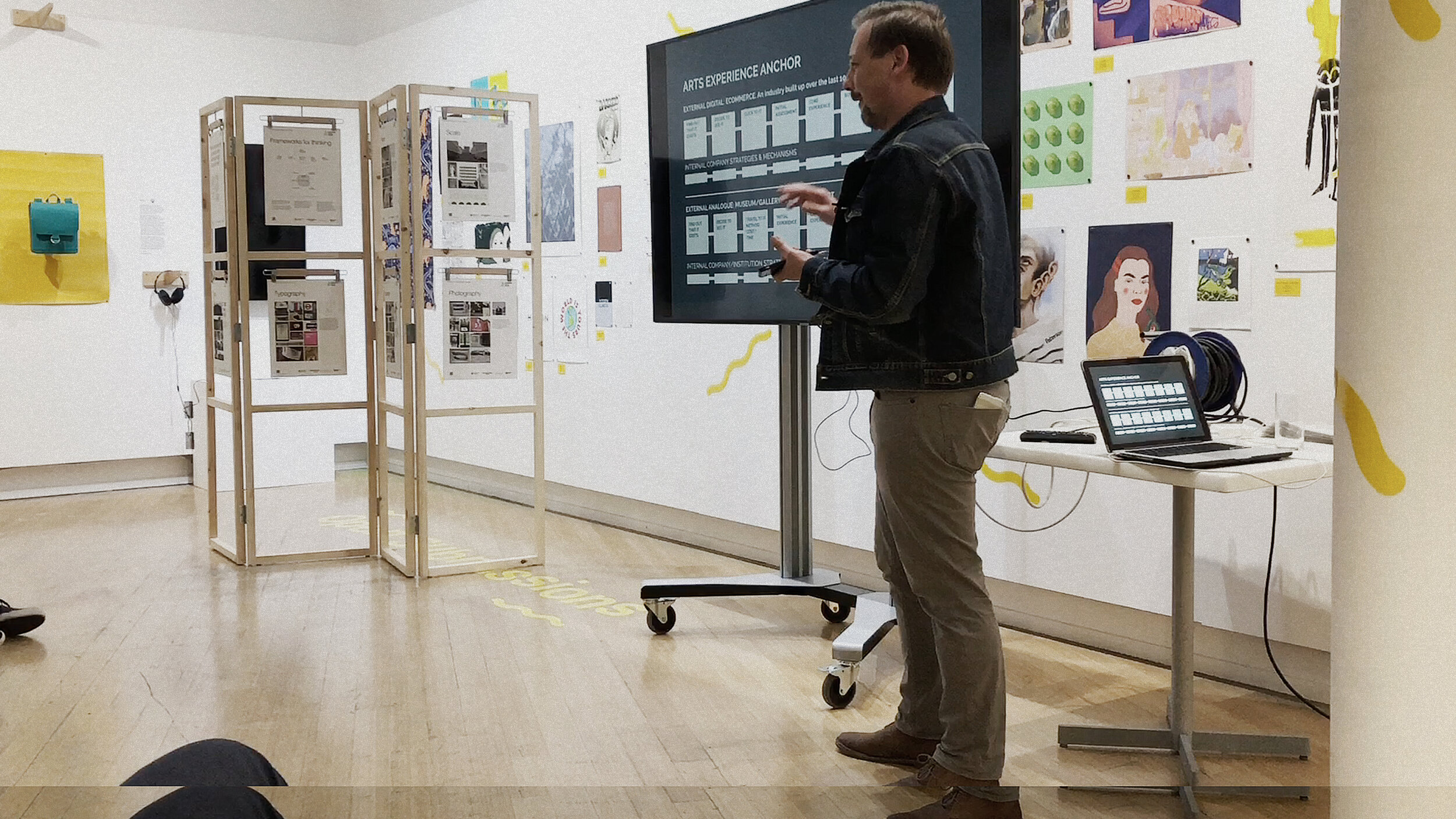Augmented Reality and a Sense of Place
As part of Design Season and hosted at LCB Depot in Leicester , we were asked to take part in a talk with Dr Robert Harland from Loughborough University and Dr Sean Clark from Interact Digital Arts. We were asked to consider how graphic design in the urban environment affects your sense of place and how this might change through increased use of Augmented Reality technology.
THE PROPOSITION
How does graphic design in the urban environment affect your sense of place? How is this changing through increased use of Augmented Reality technology? What new opportunities does this create for artists and designers? These questions and more will be discussed during this free session involving Dr Robert Harland from Loughborough University, Sean Clark from Interact Digital Arts and the directors of Graff.io Arts. There will also be the launch of Cuttlefish Mapps, a new locally-developed platform for distributing location-based content.
INTRODUCTION
This was the perfect chance for us to unravel our thoughts & idea's about the impact that Augmented Reality will have on communication, the art & design world and culture. Designers are starting to realise that with UX design that there are social/well being implications for their decisions so another discipline in the area of ethics should be brought to the table. With galleries like the V&A experiencing almost x10 the traffic online now, will AR help bring traffic from an online world to experience the physical? Will a city retain the rights to an augmented or virtual world or are we to expect a "land grab" on markers - who is in control? This was also a chance to unveil the Beta for our new Graff.io Arts Augmented Reality app & to demo it on a series of AR artworks.
AN EXCERPT OF THE TALK
We've looked into Augmented Reality and we've thought how do you do this? We've looked into apps that are avail & different technologies, The only way that we could find to really do it is to collab with @swipeandtap. A Leicester based tech company building a prototype Augmented Reality app with us.
We've got some pictures, we can show you some examples of augmented layers later.
We are GA. Small co based in Loughborough, there's only four of us. We do a lot of creative collabs. We say that we're an art shop. This is our opening statement, written about two months ago, And we're finding that it's already out of date.
We are exploring these new areas, which encompass the kind of things that are coming up within that shop experience. If you go to a museum & you're dealing with art in a museum. Or if you're dealing with a shop and you're buying online. There are all these different channels & projects coming up. We've met Sean Clark and formed Gallery Without Walls together. We have Robert ( quote ). There's a lot happening right now locally in Leicestershire. I've worked in London for many years & I'm so glad that I've come back here. I've worked in London for over 20 years and I'm so glad I moved back here - I'm seeing more doors opening here & more easily and more accessibly here.
One of our company agenda's is how can do innovative creative collabs & projects here and not go bankrupt! We're looking at ways of doing this and working out if there are ways possible to stop the "brain drain". Is there any way of doing collaborative projects here and not have to move to the capital. Get as much going on locally as possible.
We've got issues here: We say we are an art shop and we sell online. We also have a problem here where we talk about the real word. What is the real world ?
So we are finding ways that a company, that's traditionally a certain kind of art shop has to change and emerge and go forward. We're looking at all the steps around looking at art and experiencing art and all the things involved in that and how we might have to change with it. That's why we're interested in AR and XR tech, because there are all these different layers.
So this sums up where we're at right now, the genie is out of the bottle! This new tech means things will never be the same.
With Minecraft & Pokemon, the kids are all used to it's commercial. Within the arts, I've been into this since William Gibson in the 90's. It's been in the creative sci-fi and cyber punk mind set for a long time. Now the tech is here for us to finally get on with it !
If we are a company thats looking at selling art or dealing with art, and how does that relate to how a museum or a gallery would deal with it? And the core journeys to experiencing art.
So how do we find out about art?
If there's an exhibition on or a print is online for sale, you don't just wake up and a canvas it lands on your head! you have to find out that it exists. In the analogue world, you might see a physical advert on a bus or get a leaflet & other physical ways that you find out that something's available?
If we were selling stuff online, this might come from a facebook ad or a comment somewhere. If it's a gallery they're putting money into leaflets or it's word of mouth. ~There's all these things going on behind the scenes.
Then how do you decide to see it? If you're online, you might click it - or not. In the analogue space this would be able your initial experience of walking into a gallery space and experiencing the architecture etc. And your REAL experience of the art.
Then your real experience of the work. At this point, we could be looking at how Augmented reality could be used to add more layers to the art. So where you needed for example Paul McCartney to sing there, we could add another layer, we could add Paul McCartney! If it was a painting, we could add an overlay through your phone to give more information about that artist. These things are real tools that help industry and help the arts in different ways. This could be able art or the arts, but we might end up needing teams of people.
So where Robert is talking about physical cities, you've got town planners then engineers, then signage...
If you’d like to talk to us about any of these themes, including augmented reality, gives us a call or email us here.



